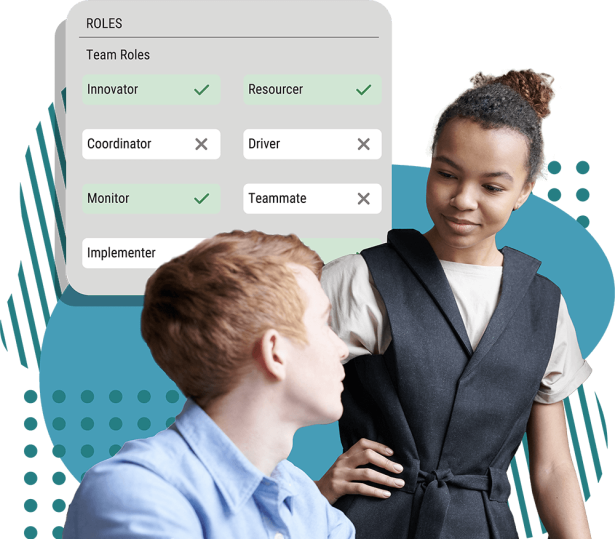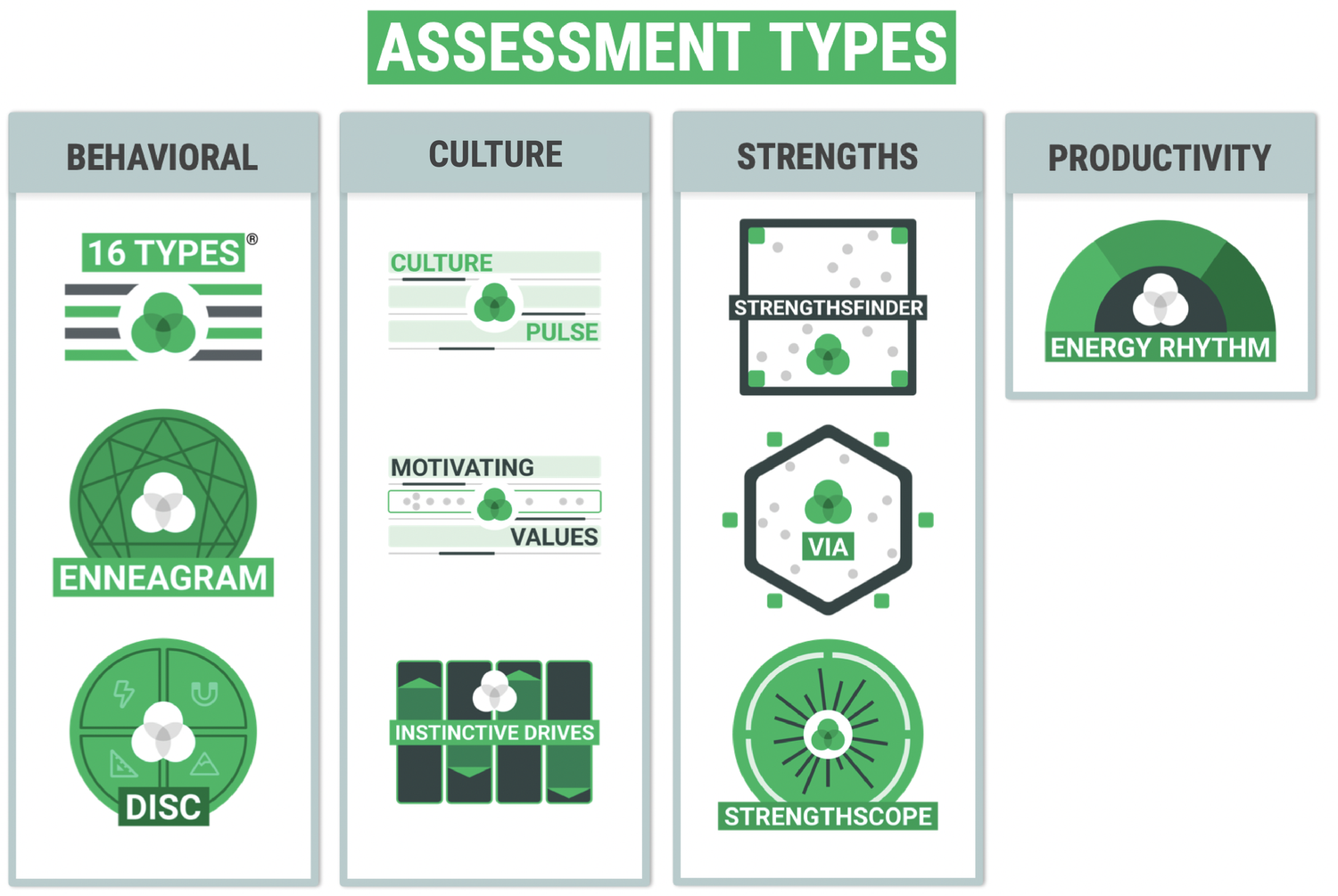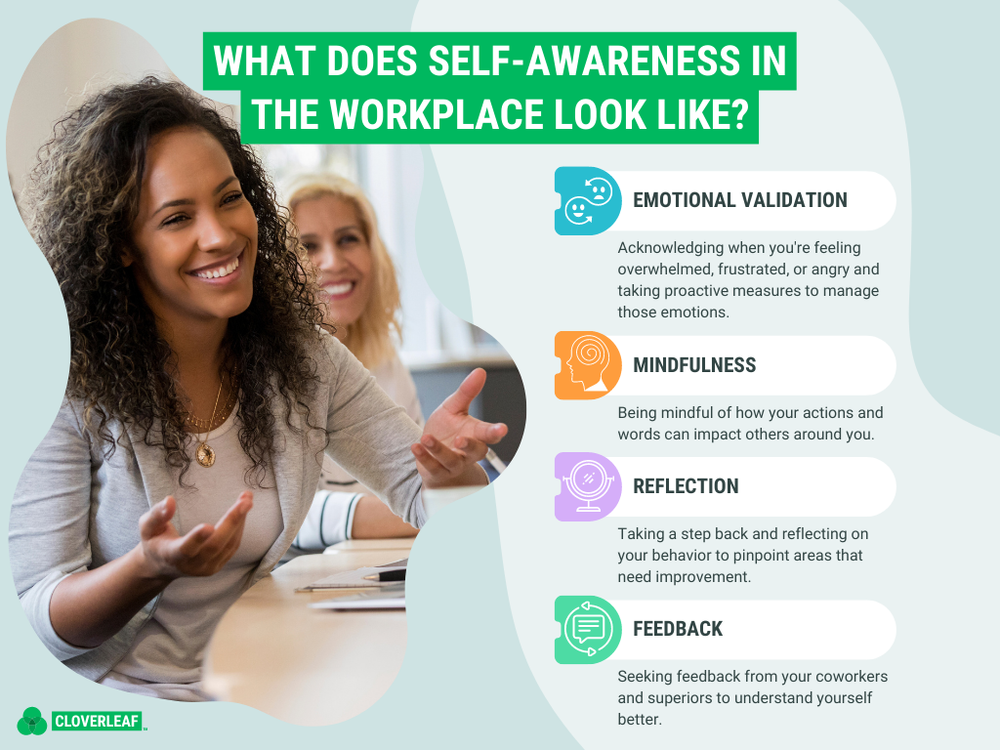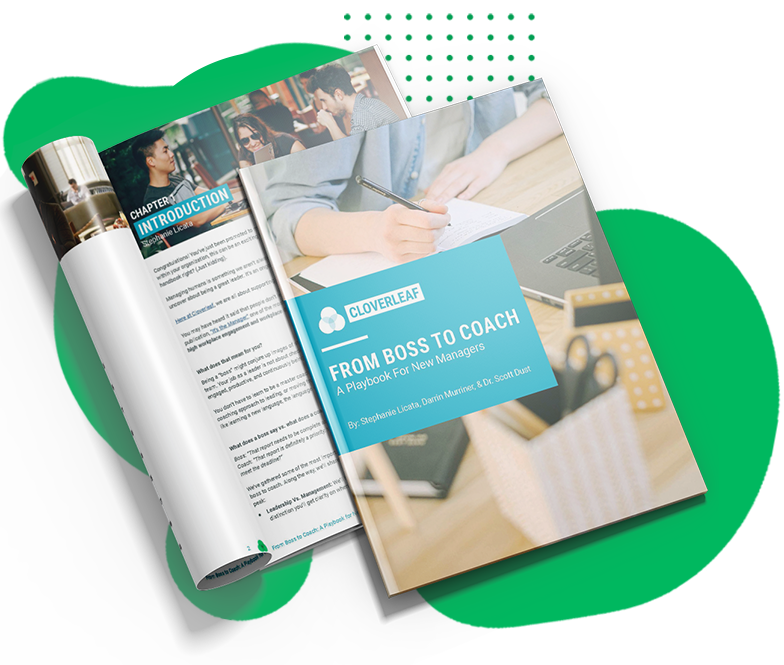Have you ever found yourself in a role where your responsibilities were as clear as mud? Or perhaps a team member feels stuck in a job description that hardly taps into their natural strengths, leaving them feeling underutilized and disengaged? If so, you’re not alone. Navigating the complexities of team roles and responsibilities can be challenging.
Understanding the essence of a team—its purpose, accountability, who it serves, and what it ultimately aims to achieve— is the first step towards clear-cut roles and responsibilities. By answering these pivotal questions, teams and their members can share vision and focused action.
When roles align with an individual’s strengths and the team’s purpose, the result is a motivated, engaged, and highly productive team. This synergy can elevate an individual’s job satisfaction and boost overall team performance. Leaders can move away from confusion toward organizational effectiveness through mutual understanding and clear roles. After all, isn’t that the ultimate goal of any team?
Key Takeaways:
- Role clarification goes beyond job descriptions; understanding and leveraging individual strengths can dramatically increase team effectiveness.
- Data-driven insights offer a strategic tool to better align responsibilities with team member’s unique skills and potential.
- Shifting roles and responsibilities based on data insights fosters better collaboration and optimizes overall team performance.
- Facilitating the understanding and application of team strengths can transform how roles and responsibilities are assigned.
- Harnessing data-informed decisions elevates individual performance and fosters a culture of continuous learning and improvement, which is crucial for strategic leadership.

What Are Team Roles And Responsibilities In The Workplace
Team roles and responsibilities in the workplace refer to the specific tasks and duties assigned to each team member and the expectations for their behavior and interaction within the team.
To further define, it’s helpful to untangle Role from Responsibility.
To empower individuals to perform at their maximum potential, their specific function within the team should be clear-cut and well-defined. Therefore, a ‘role’ pertains to an individual’s unique position within a team – this could be as a leader, facilitator, innovator, or implementer, among others. These roles are often closely tied to the person’s strengths and abilities, allowing them to contribute most effectively.
‘Responsibilities,’ on the other hand, refer to the specific tasks or duties the person is accountable for in their role.
For example, a team leader might be responsible for setting the team’s direction and making strategic decisions. At the same time, an implementer would be accountable for executing the plans and bringing ideas into reality. Clear responsibilities help ensure everyone knows exactly what they need to do, which allows the team to function more smoothly.

HUMAN SKILL PROGRAMS ARE HITTING LIMITATIONS...
- Close the widening gap between learning and on-the-job application
- Overcome the tension of pausing productivity for development opportunities
- Integrate learning so it is actually in the flow of work
- The evolution of human skill development
- What Automated Coaching™ is and how it works.

The Power of Clarity: Why Defining Team Roles is a Game-Changer
Taking time to clarify roles and responsibilities is crucial not only for the individual but also for the team dynamics. A clear understanding of who does what prevents role overlap and redundancies, streamlining the workflow and averting potential chaos. The benefits extend beyond mere efficiency—it fosters an environment of mutual respect and understanding and cultivates a sense of purpose among team members.
But clarifying roles is not just about outlining duties in a job description. It’s about recognizing and harnessing each individual’s unique strengths to the team. Job descriptions on paper are two-dimensional, unable to capture the full spectrum of talents and aptitudes a person can contribute within their role. By highlighting these strengths, stakeholders can enable each individual to operate more effectively and derive greater satisfaction from their work.
Kickstarting meaningful conversations about roles and responsibilities begins with one key element: harnessing the power of insight! By understanding each team member’s unique strengths and capabilities, leaders can better articulate individual roles and responsibilities for high performance.
How To Empower Individual Contributors to Level Up In Their Role
Picture this: You have a team member with a defined role and a list of responsibilities. This individual possesses ideas, strengths, and competencies that can further their role’s effectiveness to support team responsibilities. They might even see opportunities to reshuffle their responsibilities, shedding some tasks while embracing new ones that better align with their talents.
They’re eager to stretch their wings, elevate their career, and take on more challenging responsibilities. Your team has been grappling with project management and meeting deadlines, and this individual is confident they can make a significant difference. Although project management isn’t currently within their purview, they believe in their potential for it to become an essential aspect of their role.
Enter Cloverleaf. The beauty of this tool lies in the power of its assessments to generate coaching insights that illuminate your team member’s strengths and areas for growth. Equipped with these insights, everyone on your team can engage in meaningful conversations with their manager about evolving their role.
And the best part? All it takes is a simple screen share to showcase your potential.

Imagine This Scenario:
Let’s say an individual becomes aware of their knack for coordinating tasks and ensuring timely deliverables—skills essential in efficient project management.
This person is ready to initiate a roles & responsibilities conversation with their team leader. Prepared with detailed insight into their unique abilities and strengths, they’re ready to show how they can make a crucial difference in a specific role.
Simultaneously, their manager can access insights about this person because they are both active within the Cloverleaf Dashboard. This data helps them visualize how they can help support diversifying this person’s role and identify their potential for a future leadership position.
Suddenly, the discussion about adjusting a role evolves into a long-term career development conversation. As a result, both people are enthusiastic and engaged, eager to unleash their potential.
Supercharging Team Role Clarification from a Manager’s Perspective
Busy managers need deeper insights into individuals to develop their roles and responsibilities within their entire team. Juggling various tasks with limited time can make organizing extensive team meetings focusing solely on defining these roles and responsibilities difficult. Therefore, they need a practical, at-a-glance solution to create clear roles and responsibilities.
Managers are often aware of areas within the team that need improvement. Take team structure as an example— if off, it can hinder overall success and require a reshuffling of responsibilities to leverage the team’s strengths better.
A comprehensive understanding of each individual’s strengths can improve problem-solving and increase the team’s success. If a manager wants to understand where the teamwork is breaking down, they should evaluate how strengths are dispersed within the team.
Diving deeper than job titles and descriptions by examining team member roles holistically can offer valuable insights into how leaders might leverage their team’s skill sets and proactively plan to address the gaps.
For instance, consider a team with numerous resourceful, driven individuals who struggles to bring projects to a successful conclusion. Here, a more detailed exploration of roles and responsibilities could illuminate critical areas for improvement.
In this scenario, the manager might initiate a team discussion about current roles and accountabilities. Through this dialogue, it comes to light that a team member tasked initially with driving projects strategically excels at coordinating the minutiae to ensure project completion.
Easily accessible insights with an at-a-glance view of team strengths help the manager make informed adjustments to roles and responsibilities. These shifts not only capitalize on the strengths of individual team members but also foster better collaboration and enhance overall team effectiveness.
Five Steps To Defining Team Roles and Responsibilities
1. Define Team Goals and Objectives: Start by clearly outlining what the team is accountable for. Identify the team’s goals, the tasks necessary to achieve them, and the skills and strengths needed to execute them effectively.
2. Identify Individual Strengths and Potential: Conduct an in-depth analysis of each member’s strengths, potential, and unique skills.
3. Clarify Roles and Responsibilities: Based on the team’s objectives and the individual analysis, define clear roles and responsibilities for each teammate. Ensure these definitions leverage the individual’s strengths and align with the team’s responsibilities.
4. Facilitate Open Conversations: Foster a culture of open dialogue within the team about roles and responsibilities. Members should feel empowered to discuss their roles, propose improvements, and suggest how tasks might be better assigned.
5. Monitor and Adjust: Regularly review and adjust roles and responsibilities based on ongoing team dynamics, changing project needs, and individual growth. This continuous review allows for optimal team utilization of skills and talents, leading to more effective collaboration and enhanced performance.
This process is not just about task distribution; it’s about harnessing each member’s unique strengths and aligning them with the team’s objectives. Remember, the journey to high performance begins with clarity around roles and responsibilities, followed by a commitment to adaptation when necessary.

Final Thoughts: How Data Transforms Team Dynamics
Small, data-driven insights often produce profound results concerning team dynamics and collaboration. Defining roles and responsibilities based on each team member’s unique strengths and talents, not generic templates, is a more intentional version of leadership.
Leverage the power of insightful data to empower your leaders and teams to reach their full potential. Uncover the hidden talents within your organization to ensure you’re drawing the best from everyone.
Data-informed decision-making can transform how teams work together to achieve their shared goals. It illuminates individual strengths, mitigates weaknesses, and promotes effective collaboration. With precise, data-driven role definitions and responsibilities, each team member is positioned to thrive.
Don’t just imagine the transformative power of such insights—experience it firsthand. Schedule a Cloverleaf demo today to see an all-in-one tool to help clarify roles and develop your people to be their best every day.
Our brains are naturally wired to find repetition and patterns and to stick to what works. This tendency creates a path of least resistance, making our work more efficient. However, it can hinder creativity and innovation.
For example, take our morning routines. We often perform these on autopilot, until something disrupts the process, such as running out of shampoo or losing our phone. While this mental efficiency can be helpful in some situations, it can become problematic when we need to think outside the box.
Leading in an uncertain world poses an even greater challenge. The post-pandemic context, the possibility of economic recession, and the rise of artificial intelligence are just a few examples of the rapidly shifting macro-environment.
This doesn’t even consider the movement of people into and out of our organizations, funding changes, the market’s evolution, etc. These factors can make it difficult to maintain stability and make informed decisions, highlighting the need for resilient and adaptable leadership.
With these challenges in mind, there are seven critical components for leaders to develop or reinforce a resilient team.
So how do we cope with all this change? And as a leader, how do you help your people navigate times of uncertainty?
First, consider the sequence of events. Uncertainty precedes change and often makes it difficult for humans because it forecasts possible change.
The fear of the unknown is often more daunting than the actual impact of the change itself. This experience can be seen in a common chart known as the change curve (see below). This diagram has many variations, but the basic concept is the same.
What To Expect As A Leader Amid Uncertainty
Disruption: An event occurs providing knowledge or data about a particular situation.
Uncertainty: Next, we process the potential impact and begin to analyze it to understand the potential impact.
Exploration: Based on our analysis, we experiment and make necessary adjustments to adapt to the new reality. This could involve changing our behavior, attitudes, or actions to better align with the new information.
Adoption: We begin to feel a sense of ownership and embrace our ability to influence the future. This means we are more confident in our ability to navigate the challenges that lie ahead and make decisions that will help us achieve our goals.

3 Types Of Support Systems That Can Help Leaders Stay On Track
As we navigate the different stages of our personal and professional growth, we experience various emotions that can make the journey feel like a wild ride. We need specific tools and support systems for problem-solving to make sense of these emotions while staying on track.
Frameworks are structures for identifying and processing.
Relationships are sources of support and connectivity.
Perspectives are solutions for confusion and problems.
Frameworks are valuable tools for managing our emotions and improving decision-making. They can help us understand the patterns and triggers of our emotions and develop strategies for managing them.
Plus, we often need support from trusted advisors to help navigate challenges and embrace change. These advisors can offer valuable mentorship and a seasoned perspective on current situations.
Leaders who provide this kind of guidance can be especially helpful when processing emotions. By offering support, these leaders can help us identify blind spots, provide advice for overcoming obstacles, and suggest a new course of action.
Did you notice an emerging theme within the previous content?
Emotions.
However, if you read most of the literature or frameworks on change and uncertainty in the workplace, you will notice little mention of the personal impact.

Why Leaders Must Focus On The Emotional Toll Of Change Upon Their Teams
Most change information, programming, and market consulting focus on organizational impacts. The two most common things you will hear concerning the workplace are change management and change leadership.
Change Management: typically associated with a project or initiative and managing the change impact associated with that effort.
Change Leadership: large-scale organizational changes that could impact culture or business operations.
However, neither can happen effectively if we are not helping individuals deal with the emotional toll during times of uncertainty.
Our employers, just like all of us, are at a loss. We did not evolve to work in the VUCA (volatility, uncertainty, complexity, and ambiguity) whitewater, yet here we are. We know that if we do not take action, many will suffer.
When employees are uncertain about the future of their job, the organization, or the industry, it can heighten anxiety, stress, and fear. These emotions can lead to several negative outcomes impacting the organization’s success. – time.com
Organizations must recognize the impact of uncertainty on their employees and take steps to support them through periods of change. If not, leaders can expect to experience heightened levels of adverse effects in four critical primary areas.
4 Ways Change and Uncertainty Can Impact Organizational Health
Less Productivity: Employees distracted by worries and concerns about their job security or the organization’s future may have difficulty focusing on their work, leading to lower productivity.
Poor Morale: Uncertainty can create a sense of unease and erode employee morale, decreasing employee engagement and motivation.
Higher Turnover: Employees uncertain about their workplace may seek more stable opportunities elsewhere, leading to higher turnover rates and increased costs associated with hiring and training new employees.
Resistance To Change: When a disruption occurs, employees can fixate on their concerns, losing sight of the potential benefits of the change. As a result, the organization may struggle to gain traction to move forward amid uncertainty.
Unfortunately, some leaders overlook the impact of ignoring or not supporting their team in this area. This is a grave mistake, as leaders can significantly influence how employees respond to change within their organization.
Leadership contributes 71% of the success of change amongst employees. Therefore, leadership and leadership traits were critical factors for change reactions for employees. The openness of the leader increases the positive reactions to change. However, the resistance of the leader stimulates negative reactions to change from the employees. – springer.com
Transparent leadership can increase positive reactions to change. Therefore, leaders must prioritize supporting their team and exhibit the traits necessary to lead through change successfully.
We can continue to do exactly what we did with our mental health response to COVID-19—wait until the damage is done, and respond with palliation.
Alternatively, we can make use of our unique advantage, namely: Modern scientific knowledge of how to flourish in uncertainty. What positive behavioral scientists have learned in the last 30 years about the psychological drivers of wellbeing and how to build them offers us hope today of weathering the coming storm. – Gabriella Rosen Kellerman and Martin E.P. Seligman
Creating a culture of openness is essential, where individuals feel comfortable expressing their concerns and asking questions. In this environment, leaders can address issues promptly and ensure that team members feel supported and valued.
Leaders must proactively support their employees during times of uncertainty. Waiting until the damage is done is not a strategy.
To successfully support and lead through change, great leaders take practical action to help them manage uncertainty and course-correct as quickly as possible.

Free Playbook For Creating An Engaging Employee Experience even During Challenging Times
- What The Future Workplace Looks Like
- How To Activate Emotional Intelligence Within Your Team
- Factors Of Employee Motivation
- Strategies For Employee Engagement
- A Hybrid Work Model For Collaboration, Flexibility, & Fulfillment
- The Power Of Coaching In The Workplace
- How To Reduce The Impact Of Labour Turnover
7 Proactive Strategies For Leading Through Change And Uncertainty
1. Take Care Of Yourself: Ensure you get enough sleep, eat healthily, and exercise regularly. Also, consider seeking support from a health professional.
2. Build A Support System: Reach out to friends, family, and colleagues to discuss your worries and concerns.
3. Focus On What You Can Control: Identity areas within your control, such as your attitude and actions, rather than worrying about things out of your control.
4. Practice Mindfulness: This can be as simple as taking a few deep breaths and observing your thoughts without judging them.
5. Make A Plan: Set goals and make a timeline. Ensure your ideas are flexible enough to adapt to changes as they arise.
6. Take Action: Break your goals down into smaller tasks. This will help you to stay focused on the present moment and make progress. And celebrate your accomplishments along the way.
7. Manage Your Stress: Practice techniques such as deep breathing, meditation, or yoga to help you cope with the uncertainty. Consider scheduling regular breaks throughout the day to recharge and reduce stress levels.
Acknowledging that people on your team manage and process information differently is crucial. Factors such as tolerance for ambiguity, resistance to change, task adaptability, and openness to change can significantly influence how people respond to uncertainty and change.
How To Lean Into Your Team’s Strengths In Uncertain Times
The key for leaders is quickly understanding, recognizing, and empathizing with how their team members may respond to change. Without this knowledge, leaders can struggle to communicate, support, and motivate their teams effectively.
5 Steps To Unleash The Strength And Resilience Of Your Team
Acknowledge Every Member Of Your Team Has Valuable Strength
Gain Insight Into Each Team Members Unique Qualities
Delegate Tasks According To Motivations And Strengths
Celebrate Individual And Team Achievements
Provide Consistent Development Opportunities For Members To Grow In Their Strength
By acknowledging individual differences, leaders can effectively tailor their approach to address each employee’s needs and concerns in difficult times. This shift in mindset can significantly increase engagement, motivation, and performance while reducing negative outcomes.
Cloverleaf provides a range of assessments that can provide insight into the unique ways we may react to uncertainty and change.
For example, our behavioral assessments are the most likely to provide insights about how one might react to change. Strengths-based assessments, including CliftonStrengths® and StrengthsScope, reveal strengths individuals and teams can leverage to increase resiliency.

Take A Cloverleaf Assessment
- Unlock your team's full potential and try Cloverleaf today.
By completing multiple assessments, leaders, teams, individuals, and coaches can get a more comprehensive view of the unique strengths, personalities, and dynamics that exist within the organization.
Understanding individual differences and leveraging team members’ strengths is critical for leaders who want to lead successfully through change.
Conclusion
Embracing the uniqueness and strengths of your team members is vital to influential leadership during times of change. Leaders who tailor their approach according to the strengths of their team will drive more engagement, motivation, and performance in turbulent times.
Investing in and celebrating individual differences is a critical step toward creating a resilient team to face the headwinds of change.
Start a free trial to get personalized coaching on managing uncertainty in the workplace for you and your team.

Emotional intelligence in the workplace can greatly impact the success and productivity of a team. It involves understanding and managing your own emotions, being aware of other’s emotions, and adapting to new situations.
Traditional leadership models have primarily focused on technical skills rather than soft skills like emotional intelligence. Some leaders may not understand the impact of emotions on workplace performance and decision-making. At the same time, others may believe emotions are personal and have no place in the workplace.
Plus, developing emotional intelligence skills can be time-consuming and may not be seen as a priority for leaders focused on meeting short-term goals and targets. However, as awareness of the importance of emotional intelligence continues to grow, it is becoming increasingly clear that leaders who invest in developing their emotional intelligence and that of their teams can reap significant benefits for their organizations.
How Is Emotional Intelligence Being Used In The Workplace?
Emotional intelligence in the workplace is critical to mastering interpersonal skills, crucial for conflict management and effective communication. It involves understanding and regulating emotions to make thoughtful, objective decisions. With the ability to recognize others and their own emotions, employees can support a more collaborative and empathetic work environment. Assessment tools like MBTI and DISC can identify individual strengths and preferences, helping teammates to understand each other to drive success and well-being.
In this post, we will explore why emotional intelligence is so important in the workplace, provide examples of self-awareness, and share strategies for increasing emotional intelligence among teammates.
Why Is Emotional Intelligence In The Workplace So Valuable?
Individuals with high EQ tend to be better leaders, have stronger interpersonal skills, and are more effective in handling workplace stress and conflict.
For example, a study by TalentSmart found that 90% of top performers have high EQ. Another study by Hay Group found that leaders with high EQ have teams that are more engaged, more productive, and experience less turnover.
Research in the Journal of Organizational Behavior outlines that individuals with high emotional intelligence are better equipped to overcome one of the most significant obstacles in their work-life: employment gaps. These gaps can be involuntary, such as a termination, or voluntary, like taking time off to care for family. The higher an employee’s emotional intelligence, the more likely they are to navigate interruptions in their employment successfully.
It’s no surprise that high EQ is linked to increased job satisfaction, improved job performance, better relationships with coworkers and leaders, and employee retention.
And soft skills aren’t just great for creating a fulfilling and pleasant work environment. The link between profit and leaders with high emotional intelligence is clear. In one study, CEOs whose employees rated them high in character had an average return of 9.35% over a two-year period, nearly five times as much as companies with CEOs who had low character ratings.
Prioritizing emotional intelligence in the workplace can drive significant improvements to an organization’s bottom line. If high EQ among teammates can affect job satisfaction, performance, and employee retention, investing in EQ development within teams can be a wise business decision for leaders.
IF EQ In The Workplace Is So Important, Why Do Top-Level Leaders Resist Prioritizing It?
It’s not uncommon for leaders to push off emotional intelligence initiatives because they are familiar and comfortable with traditional measures of job performance. Things like technical skills and intelligence seem easier to quantify and measure.
A Wall Street Journal survey of 900 executives found that 92% said soft skills were equally important or more important than technical skills. But 89% of those surveyed said they have a “very or somewhat difficult time finding people with the requisite attributes.”
Additionally, they may not realize the impact of soft skills training in achieving long-term success. Further, the lack of an established or standardized method for measuring EQ could also lead to it being overlooked as a valuable metric for success.

For decades scholars have debated the relative importance of cognitive intelligence (IQ) versus emotional intelligence (EQ) to workplace performance. Research shows both are helpful. However, in the era of COVID-19, my bet is on emotional intelligence playing a much stronger role. –fastcompany.com
Remote work and other factors shaping the future workplace experience require stronger levels of communication and collaboration. As traditional workplace dynamics and routines have been disrupted, EQ becomes even more crucial in helping teammates navigate workload, well-being, conflicts, and fulfillment to create a place to thrive in their work.
We define emotional intelligence (EQ) as the power to identify, handle, and express emotions and to comprehend and empathize with the emotions of others. When it comes to the workplace, having a high EQ is crucial for building trust and managing conflict to be an effective team.
Self-awareness emerges from two places:
Internally: Understanding one’s desires, strengths, weaknesses, and impact on others.
Externally: Realizing how others interpret and experience you.
When it comes to internal and external self-awareness, it’s tempting to value one over the other. But leaders must actively work on both seeing themselves clearly and getting feedback to understand how others see them. The most highly self-aware people are actively focused on balancing the scale. – Harvard Business Review
Teams that exercise emotional intelligence do more with less drama. They are tuned into their internal emotional life, can manage those feelings, and transition that energy into positive team momentum.

HUMAN SKILL PROGRAMS ARE HITTING LIMITATIONS...
- Close the widening gap between learning and on-the-job application
- Overcome the tension of pausing productivity for development opportunities
- Integrate learning so it is actually in the flow of work
- The evolution of human skill development
- What Automated Coaching™ is and how it works.
What Does Self-Awareness In The Workplace Look Like?
Self-awareness is crucial to emotional intelligence, starting with understanding your emotions, behaviors, and thoughts. In the workplace, having a strong sense of self-awareness can take many shapes and forms, such as:
Acknowledging when you’re feeling overwhelmed, frustrated, or angry and taking proactive measures to manage those emotions
Being mindful of how your actions and words can impact others around you
Taking a step back and reflecting on your behavior to pinpoint areas that need improvement
Seeking feedback from your coworkers and superiors to understand yourself better.
Emotional intelligence is being able to understand your own emotions and manage them. It’s also the ability to observe others’ emotions, understand a situation, and adapt to remain productive at that moment.
By taking the time to understand your emotions, behavior, and thoughts and being proactive in managing them, teams can foster a positive productive work environment.

Examples Of Self-Awareness In The Workplace
Have you ever had one of those mornings where everything seems to go wrong? You arrive at work feeling overwhelmed. Every person can relate. Maybe you lost your dog, became angry in traffic, or experienced a disagreement with a family member before leaving the house. But, what if you could process those emotions and release them, allowing you to start your work day feeling recentered and in control?
Emotional intelligence can help you acknowledge and understand your emotions to prevent them from dictating your experience at work. Recentering your feelings to ensure they do not influence how you treat your teammates or drive you to make decisions because of things outside of work.
As a leader or coworker, it’s important to not only manage your own emotions but also be aware of the emotions of those around you. If you notice a colleague coming in with a negative demeanor or a bit huffy, take a moment to ask how they’re doing and if everything is okay. By simply asking questions, you can help them process their emotions and release any tension they might be feeling.
8 Questions To Help Teammates Process Their Emotions And Refocus On Work
How are you feeling right now?
Is there anything that you need to vent about or share?
Can you walk me through what has been bothering you?
What steps can we take to resolve the situation?
How can I support you at this moment?
Is there any specific task or goal you need help with?
Can you tell me more about your experience and how it has impacted you?
How do you see yourself moving forward from this situation?

By actively listening to team members verbalize their feelings, you can help them become more aware of their own emotions to help them feel more centered and able to move forward. This small act of empathy can go a long way in creating a positive work environment and improving overall workplace relationships.
How To Increase Emotional Intelligence Among Teammates
The best way to increase emotional intelligence in the workplace is to help improve self-awareness within each team member. Self-awareness enables individuals to identify areas for improvement, manage their emotions, and make more mindful decisions, which is foundational to increasing emotional intelligence.
Teams can proactively support EQ-based initiatives by implementing strategic efforts to help members feel, recognize, regulate, and communicate their emotions.
Utilize Automated Coaching™: Cloverleaf provides personalized, ongoing coaching tips to help employees develop self-awareness and powerful insight about teammates.
Celebrate Feedback And Reviews: Encourage employees to give and receive feedback in a safe by creating the structure to do so with performance management platforms.
Empower Learning and Development: Offer training programs that hone in on emotional intelligence, self-awareness, and personal growth.
Cultivate Open Communication: Work with your team leaders to establish consistent 1-on-1 meetings with direct reports to establish clear initiatives, trust, collaboration, and relationships.
Leaders play a pivotal role in shaping the culture and dynamics of the workplace. That’s why leaders must make emotional intelligence a priority. If not, the rest of the organization may not value developing their EQ or fully supporting initiatives.
And that’s where things can start to unravel. Even further, teams may lose their best talent as many seek places of employment that recognize the importance of emotional intelligence in the workplace.
Talent turnover is an expensive problem and, therefore, must be solved. Thankfully, it’s a problem that can be solved. For the most part, employees leave for reasons that are within the control of employers:
Culture
Work Environment
Growth Opportunities
Leadership Disconnect

By prioritizing emotional intelligence and creating an environment where employees feel valued and challenged, organizations can retain top talent and even attract it.
Conclusion
The next time you encounter an emotionally charged situation, consider using a simple checklist to guide your response. Ask yourself, “How am I feeling?” and “What can I do about it?”
Encourage others to share their emotions by asking, “How are you feeling today?” and “How do you want to show up for this?”
Starting a meeting with these questions can help team members process their emotions and be more present in the moment. Consider offering support by actively listening, responding, or taking action when addressing a situation. This approach can help increase emotional intelligence and create a more supportive and effective work environment.
If you’re looking for additional ways to enhance emotional intelligence in the workplace, visit the post that details an Employee Engagement Strategy For A Human-Centered Workplace.
Potential is such a loaded word and can be incredibly subjective. Yet we throw it around a lot in leadership development circles. In fact, multiple talent management models (including the popular 9 Box approach) use potential as a cornerstone element.
When leadership performance and potential are assessed and plotted on the graph, individuals in the upper right quadrant (Box 1) are identified as high-potential candidates for succession, while those in the lower left quadrant (Box 9) may need to be reassigned or removed from the organization. – shrm.org
Identifying high-potential employees should be on the radar of every leader; however, using a definition for hipo (high-potential) team members that clarifies how your organization recognizes and retains top talent is crucial.
How to Identify High-Potential Employees
The most important thing your team can do to retain future leaders is move from a fixed mindset concerning high-potential employees to a growth mindset.
What actually is potential? According to the dictionary, it is “having or showing the capacity to become or develop into something in the future.”
The problem talent management leaders face is we all have different definitions for what that something is. In other words, what is the “something” you are developing hipo individuals into?
Depending on the organization, role, experience, or your manager’s perspective, potential can mean many things.
One challenge with defining what is ‘potential’ in organizations is that the process of gauging it is elusive and imprecise — and can be highly subjective. And despite what some leaders would like to believe, potential does not equate to current or past performance. – shrm.org.
What I typically hear when I ask others what they mean by the term potential is “management potential.” This definition implies that those who want a technical or craft-focused role have no potential for that organization over the intermediate or long term.
And this is precisely why using potential as a key component of talent evaluation is so dangerous. The criteria for how a CTO evaluates potential relative to a Sales Manager or Marketing Leader vary widely.
This mentality is a fixed mindset approach to talent evaluation that only sees the world in black and white (possibly with some limited shades of gray) instead of being full of vibrant color.

What Do You Want Employees To Have High Potential For?
Limiting a team member’s potential to a specific role will decrease your ability to mentor growth opportunities that are much more expansive than a position and more valuable to your organization.
If your only lens for evaluating potential is fixed according to your organization’s immediate needs rather than using a spectrum that empowers top talent to contribute and even create new ways of providing value, you will hinder future leaders.
…science reveals that regardless of the context, job, and industry, such individuals tend to share a range of measurable qualities, which can be identified fairly early in the process. – hbr.org
Another definition of potential is “qualities or abilities that may be developed and lead to future success.” I like this definition much better, and it should represent how talent management views the potential of their workforce.
To identify high-potential employees, leaders must expand their definition of potential to include room for the unique value that every team member offers. Next, mentor hipo individuals to empower them to contribute significantly to the organization.
The reality is that everyone on your team has potential. At Cloverleaf, we have a saying that ‘everyone has value.’
How our team aligns this value with the organization’s needs is fluid. We work to manage this dynamic rather than control it because we believe it grants freedom for our team to contribute their best work uniquely.
Would you rather help develop someone’s potential towards a fixed expectation or increase their capacity to add value?
Strictly adhering to labels like potential without mentoring team members to develop their unique leadership will minimize or cap the value each person brings to our teams and organizations.

HUMAN SKILL PROGRAMS ARE HITTING LIMITATIONS...
- Close the widening gap between learning and on-the-job application
- Overcome the tension of pausing productivity for development opportunities
- Integrate learning so it is actually in the flow of work
- The evolution of human skill development
- What Automated Coaching™ is and how it works.
3 Effective Ways To Ensure You Consistently Develop High-Potential Employees To Provide Value
Adopting the belief that everyone has value (or potential) will impact how we lead, build culture, and make talent decisions. Doing so can help leaders increase collaboration and productivity as they choose to honor, empower, and coach hipo employees.
Here are three ways to effectively build a culture of developing high-potential employees:
1. Prioritize Coaching For Your Team That Is Personalized And Values-Based.
The Cloverleaf team uses our integrated coaching product to constantly reinforce these unique elements of value brought by each team member in a way that broadens everyone’s view of potential over time.
For example, imagine helping your team to further realize their strengths and those of their teammates.
Providing your team with relevant insights into themselves and those they work with will boost self-awareness, strengthen collaborative efforts, and minimize workplace drama.


2. Embed Recognition Of One Another’s Unique Value Into Your Teams Rhythms And Rituals.
Creating a practice that habituates celebrating team members’ competencies and accomplishments is a powerful way to supplement your employee development strategy.
This practice can include an all-team lunch weekly through Zoom, shout-outs that are rewarded with bonus opportunities, quarterly all-team off-sites, and regular team coaching sessions.
3. Allow Team Members Roles To Evolve Based On Their Motivation And Strengths.
Facilitating space for individuals to pivot within your organization that aligns with their giftings and natural drivers organically creates development opportunities for your entire team.
Although Cloverleaf is a smaller team, we have a track record of Internal mobility where roles evolve as stronger recognition of an individual’s strengths and interests surface. Repeatedly, we experience the benefits of innovation and engagement by permitting these types of transitions.
In Summary
It’s possible to limit your team’s potential by limiting your definition of what it means to develop it.
We should expand the definition of potential and create pathways for everyone to understand the unique value inherent in each of us and seek to align that with the needs of our organizations.
Stop using antiquated methods to identify high-potential employees according to the organization’s current needs. I encourage talent and people leaders to develop potential by fostering and coaching the inherent value each member offers your team.
You can begin the journey of multiplying your team’s potential by starting a free trial with Cloverleaf today.
There is an old adage in leadership circles that “the best test for whether a leader is exceptional is how they handle a crisis.” Unfortunately, leading during crises is tricky. A crisis situation presents a ton of competing tensions. The best leaders manage these times of uncertainty by embracing paradoxical leadership—behaviors that manage seemingly competing, yet interrelated demands.
Outlined below are four paradoxes that can pop up during times of change. To help practicing managers understand how best to flex their “paradoxical leadership” potential, I offer some examples specific to the coronavirus pandemic. For managers, the outbreak was complex and confusing to overcome, making it a textbook opportunity to evaluate how best to lead during uncertain times.
Balancing Speed and Accuracy
When a crisis hits, team members want to know what’s going on and what the plan of action is. For example, as the pandemic spread across the U.S., leaders were struggling to make big decisions because the situation was constantly changing. They had to make big decisions, such as travel restrictions, remote work policies, and preemptive cost-cutting solutions.
The challenge for leaders is balancing the need to communicate with team members in a timely manner, yet provide information that is accurate and actually helpful. When leaders wait too long to communicate critical messages, employees fill the void with their own assumptions, and often lose faith in their leader’s ability. But when business leaders provide half-baked, unclear, or misinformed messages to their employees, it makes it that much harder to overcome the challenges as a team.
Leaders should proactively consider varying courses of action, ensure that they are in-the-know as critical information surfaces, and then immediately focus their attention on offering timely decision-making and direction, but never at the expense of accuracy.
Balancing Uncertainty and Clarity
Crises are unfortunate in that they cut to the core of a need we all have: security. Although a leadership team might feel compelled to reassure their employees that everything is going to be fine during difficult times, in reality, they can’t make that promise.
Making statements, for example, about when pre-pandemic policies will go back into effect may have satisfied employees’ immediate concerns, but was a guess at best. What a leader can do is communicate what exactly they are doing to manage the uncertainty. This, in and of itself, is a way to help people feel more secure. For example, leaders should have been outlining who they are working with or talking to in order to have an evidence-based recommendation for how to overcome each step of the outbreak.
Balancing Details and the Big Picture
Crises tend to have varying levels of uncertainty and a wide variety of implications. Specific to the pandemic, it affected individuals’ health and livelihood, organizations’ short-term profitability and long-term survival, and society’s overall health and economic stability.
Leaders must carefully explain to employees why and how their choices affect these important and connected systems.
It’s a mistake to only explain to employees how the organization’s decisions affect them individually. For example, it should have been clear that the reason employees were being encouraged to work remotely had just as much to do with contributing to the societal-level initiative to “flatten the curve” as it did with employees’ personal health.
Balancing the Past and the Present
When the coronavirus was finally under control, lots of us stopped working 100% remotely, customers re-scheduled their canceled meetings, and supply chains eventually caught up. This was actually the best opportunity to evaluate crisis leadership. We tend to think of crisis leadership as an in-the-moment phenomenon. But this is only partially true.
When the dust clears, everyone will have plenty of time to critique the extent to which their leader was prepared to manage the crisis. It will be at this stage where great leaders admit their mistakes and create a plan for going forward, while weak leaders will spend so much time covering their tracks or justifying their decisions that they will squander the opportunity to re-group.
Crises, by definition, are complicated and unpredictable. Mistakes are inevitable. Effective leaders embrace the mistakes of the past, yet have a clear plan for the future.
Crisis Leadership Is About Balancing Paradox
Leading a crisis is an imperfect balancing act. The change and uncertainty that teams will face is loaded with paradox. That’s why we need leaders that can embrace these tips in order to manage difficult situations.
Instead of judging your crisis leadership skills on whether or not you did one thing perfectly (e.g., speed), consider evaluating whether you simultaneously did two things well (e.g., speed and accuracy). And instead of judging yourself on whether or not your decisions where “perfect,” it might instead be helpful to evaluate whether the way you communicated about your decisions included room to correct mistakes and acknowledge the complex realities of the situation.
By definition, it’s impossible to “solve” paradoxes. All you can really do is acknowledge them and then do your best to keep afloat.

If you’re a leader ready to learn practical management skills that utilize coaching to develop your team, check out the Boss To Coach Playbook.
About Dr. Scott Dust
Scott Dust, Ph.D. is the Fealy Family Endowed Chair in Entrepreneurship at the Carl H. Lindner College of Business at the University of Cincinnati. Scott is also the Chief Research Officer at Cloverleaf, an HR-tech platform that facilitates coaching insights for everyone. Scott earned his Ph.D. in Management and Organizational Behavior at the LeBow College of Business, Drexel University, and his B.S. and M.B.A. from the Kelley School of Business, Indiana University. His primary areas of research are leadership, leader-follower relationships, and teams. His work has appeared in academic journals such as the Journal of Applied Psychology, Journal of Organizational Behavior, Leadership Quarterly, and Human Relations, and he currently serves on the editorial review board of the Journal of Organizational Behavior, Group and Organization Management, and Journal of Social Psychology.
How much does trust REALLY matter? Let’s do the math (Thanks Workforce Institute)
Nearly two-thirds (64%) of employees say trust has a direct impact on their sense of belonging at work.
Employees who do not feel trusted are less productive: Two-thirds (68%) say that the perception of low trust hurts their daily effort.
Those are some interesting numbers but what does that mean for YOU, a new manager, faced with managing a group of humans waiting for you to guide them? You may also be thinking that employee trust is a two-way street, and you wouldn’t be wrong. But right now, you only have 100% control over yourself, so let’s start there.
Building Trust Starts with….Relationships
Think of the person you trust most in your own life. Maybe it’s a partner, parent, or best friend. When you think of WHY you trust them, what comes to mind? You might feel that there is a lack of feeling judged, a feeling of being able to be yourself and they might even be great listeners.
While work relationships and employee engagement may be a bit different, having some of these aspects present between you and your team members can only be a good thing. This will be easy with some people. Others may make you reach for that second cup of coffee while trying really hard not to eye roll. Yes, sometimes we have to manage difficult people, people we would NEVER be friends with outside of work, and even people who utterly annoy us.
This is where you grow and build mutual respect. Where you get to shine as a leader is in how you build trusting relationships in your work environment with those that are the most difficult.
How Trust Opens Doors
We’ll get to the HOW of trust in a moment, but ultimately, trust between you and your individual team members AND within your team just makes things happen. When you establish trust it opens the door to increased productivity, quality of work outputs, and yes, an ENJOYABLE experience at work. 50 years ago people went to work to get a paycheck. Now people (rightfully so) demand that they might actually get to enjoy what they do.
When trust is present 1-1 with your team members:
You’ll be perceived as approachable and able to get ahead of problems that need to be solved ASAP.
You’ll learn more quickly how to leverage the talent of your team members for optimal performance.
You’ll keep people: If you’ve ever had to pick up the slack when a team member leaves, you know the importance of employee retention.
When trust is present AMONGST your entire team:
You might actually like going to work.
You’ll all feel like you’ve got each other’s backs. This leads to less stress and burnout when a company culture where no one is left to fend for themselves is in place.
You’ll unlock creativity and potential in each other which has a ripple effect on collaboration, and productivity while helping people do their best work.
How and WHY to Identify a Lack of Trust
You’ve just been promoted, and you sense that a member of your team is pretty stand-off-ish. In your first 1-1 with this team member they give a lot of one-word answers, don’t make much eye contact, and don’t seem too interested to let you in. We don’t always know EXACTLY what is going on so be careful not to jump to conclusions.
When you sense a lack of trust, good leaders know how to get in there and open up the difficult conversations. If trust isn’t present, you have to do the hard work and find out why. Now, this doesn’t mean going full-on “Olivia Benson SVU” and interrogating the person as if they are suspected of a crime. It does however mean an honest conversation with a few powerful, yet tactful questions:
Start with: “I want to make sure you feel comfortable coming to me with whatever you need support with.”
Followed by these options:
How do you think we can work together best?
Is there anything you need to share for us to have the most productive work relationship?
What type of support do you feel you need most from me right now?
From what they share, LISTEN before responding, and know that this may take more than one conversation.

HUMAN SKILL PROGRAMS ARE HITTING LIMITATIONS...
- Close the widening gap between learning and on-the-job application
- Overcome the tension of pausing productivity for development opportunities
- Integrate learning so it is actually in the flow of work
- The evolution of human skill development
- What Automated Coaching™ is and how it works.
How to Build Trust With Your Team
Let’s go back to what people are actually saying. In that same Workforce Institute research we shared earlier, they asked team members how their managers can earn their trust. Here are some of the top answers and some practical tips to go along with it.
Be Dependable
For people to count on you, they need to be clear and consistent. Do what you say you will, and if you CAN’T do it, communicate the change as soon as possible.
Be a calendar warrior. Include reminders for when you said you would check in with individuals or projects and don’t rely on sticky notes or your own memory.
Ask for help from YOUR boss when you need it. Don’t try to be a hero or a lone ranger. Lean into teamwork and speak up when you need support.
Actively Listen
Active listening is an art. It means NOT thinking about your to-do list, your weekend plans, or your latest Netflix series obsession while someone else is talking to you. Trustworthy leaders focus on improving their employee listening skills.
Focus on what the person is also NOT saying. Observe their behavior, emotions, and body language. What is your gut telling you to say or ask next?
Clarify and reflect back on what you hear to ensure you understand: “So what I am getting from our conversation is that you don’t have enough support from the team on this project and we might need to share ideas in a meeting to discuss this – is that accurate?”
Give Helpful Feedback
Give feedback on time, when it counts, and with an intention to contribute.
Criticism is not feedback. Constructive feedback with alternative approaches and solutions is helpful.
Don’t stop at “great job!” Express the impact that a job well done has had on the team, organization, and specific individuals as well.
Empower your team members to solicit feedback when they need it to build high levels of trust.
The key thing to remember is building trust is hard work and takes TIME. Every person you manage is bringing their entire lives into this working relationship. Every person has their own challenges with trust, and part of being a great leader is navigating the path to building trust with confidence that eventually will all work out.
About Stephanie Licata
With more than two decades of leadership and management experience, Stephanie Licata is a skilled professional coach, adult learning specialist, consultant and speaker. She has trained thousands of leaders and managers in the art and science of coaching as part of large-scale projects to develop coaching cultures within organizations. Stephanie received her professional coaching certification from New York University, and is also certified at the ACC level with the International Coaching Federation. She holds a BS in counseling and a Masters in Organizational Psychology from Columbia University.



